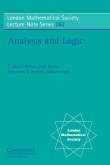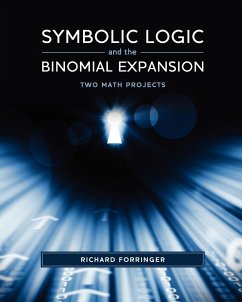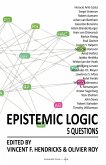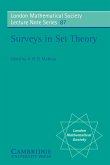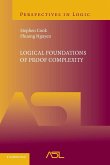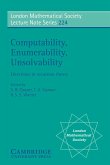Linear logic, introduced in 1986 by J.-Y. Girard, is based upon a fine grain analysis of the main proof-theoretical notions of logic. The subject develops along the lines of denotational semantics, proof nets and the geometry of interaction. Its basic dynamical nature has attracted computer scientists, and various promising connections have been made in the areas of optimal program execution, interaction nets and knowledge representation. This book is the refereed proceedings of the first international meeting on linear logic held at Cornell University, in June 1993. Survey papers devoted to specific areas of linear logic, as well as an extensive general introduction to the subject by J.-Y. Girard, have been added, so as to make this book a valuable tool both for the beginner and for the advanced researcher.
Table of contents:
Linear logic: its syntax and semantics J. Y. Girard; Part I. Categories and Semantics: 1. Bilinear logic in algebra and linguistics J. Lambek; 2. A category arising in linear logic, complexity theory and set theory A. Blass; 3. Hypercoherences: a strongly stable model of linear logic T. Erhard; Part II. Complexity and Expressivity: 4. Deciding provability of linear logic formulas P. D. Lincoln; 5. The direct simulation of Minsky machines in linear logic M. I. Kanovich; 6. Stochastic interaction and linear logic P. D. Lincoln, J. Mitchell and A. Scedrov; 7. Inheritance with exceptions C. Fouqueré and J. Vauzeilles; Part III. Proof Theory: 8. On the fine structure of the exponential rule S. Martini and A. Masini; 9. Sequent calculi for second order logic V. Danos, J. B. Joinet and H. Schellinx; Part IV. Proff Nets: 10. From proof nets to interaction nets Y. Lafont; 11. Empires and kingdoms in MLL G. Bellin and J. Van De Wiele; 12. Noncommutative proof nets V. M. Abrusci; 13. Volume of multiplicative formulas and provability F. Metayer; Part V. Geometry of Interaction: 14. Proof nets and Hilbert space V. Danos and L. Regnier; 15. Geometry of interacion III: accomodating the additives J. Y. Girard.
Based to a large extent on the Linear Logic Workshop held at Cornell, in June 1993, this volume aims to give an overview of linear logic that will be useful to mathematicians and computer scientists working in this area. The book is in five parts: categories and semantics; complexity and expressivity; proof theory; proof nets; and geometry of interaction. The whole book begins with a general introduction on linear logic which should ensure that this book can be used by the novice as well as the expert.
This volume gives an overview of linear logic that will be useful to mathematicians and computer scientists working in this area.
Hinweis: Dieser Artikel kann nur an eine deutsche Lieferadresse ausgeliefert werden.
Table of contents:
Linear logic: its syntax and semantics J. Y. Girard; Part I. Categories and Semantics: 1. Bilinear logic in algebra and linguistics J. Lambek; 2. A category arising in linear logic, complexity theory and set theory A. Blass; 3. Hypercoherences: a strongly stable model of linear logic T. Erhard; Part II. Complexity and Expressivity: 4. Deciding provability of linear logic formulas P. D. Lincoln; 5. The direct simulation of Minsky machines in linear logic M. I. Kanovich; 6. Stochastic interaction and linear logic P. D. Lincoln, J. Mitchell and A. Scedrov; 7. Inheritance with exceptions C. Fouqueré and J. Vauzeilles; Part III. Proof Theory: 8. On the fine structure of the exponential rule S. Martini and A. Masini; 9. Sequent calculi for second order logic V. Danos, J. B. Joinet and H. Schellinx; Part IV. Proff Nets: 10. From proof nets to interaction nets Y. Lafont; 11. Empires and kingdoms in MLL G. Bellin and J. Van De Wiele; 12. Noncommutative proof nets V. M. Abrusci; 13. Volume of multiplicative formulas and provability F. Metayer; Part V. Geometry of Interaction: 14. Proof nets and Hilbert space V. Danos and L. Regnier; 15. Geometry of interacion III: accomodating the additives J. Y. Girard.
Based to a large extent on the Linear Logic Workshop held at Cornell, in June 1993, this volume aims to give an overview of linear logic that will be useful to mathematicians and computer scientists working in this area. The book is in five parts: categories and semantics; complexity and expressivity; proof theory; proof nets; and geometry of interaction. The whole book begins with a general introduction on linear logic which should ensure that this book can be used by the novice as well as the expert.
This volume gives an overview of linear logic that will be useful to mathematicians and computer scientists working in this area.
Hinweis: Dieser Artikel kann nur an eine deutsche Lieferadresse ausgeliefert werden.



